Tech
We investigated whether digital contact tracing actually worked in the US
Published
3 years agoon
By
Drew Simpson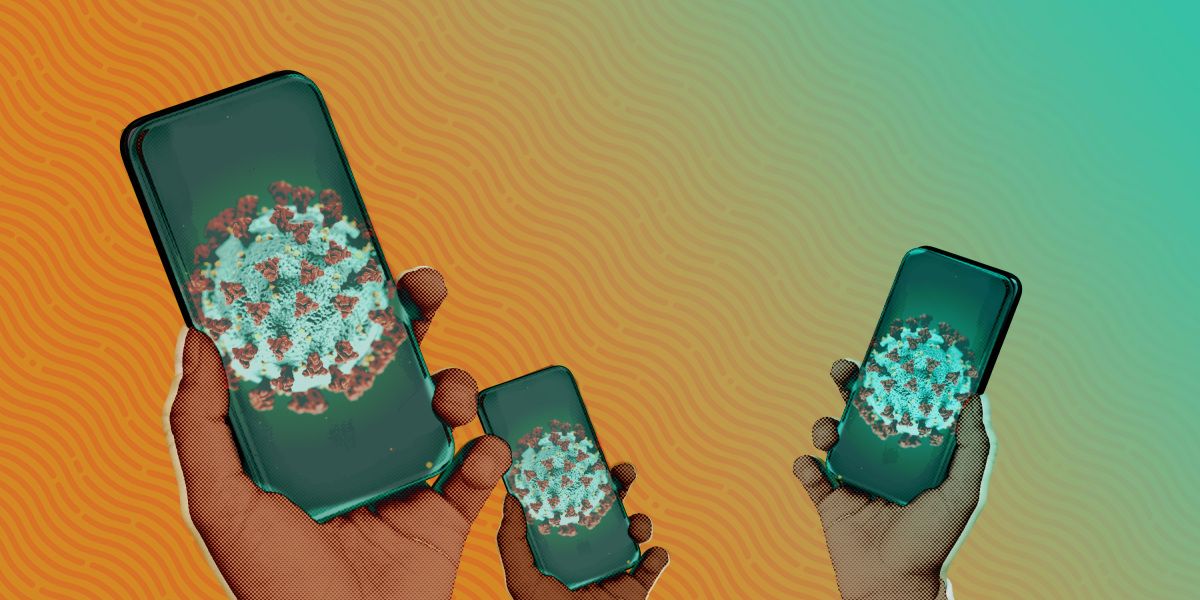
In the spring of 2020, the first versions of covid-19 exposure notification systems were released to the public. These systems promised to slow the disease’s spread by providing automated warnings to people who came into contact with the virus. Now, over a year later, residents in over 50 countries—including half of US states—can opt into these systems.
But the big question remains: how well did this technology work? Some studies suggest answers, but despite such wide rollout, it’s difficult to evaluate whether exposure notifications were actually able to stall covid-19 spread. This is especially true in the US, where many states launched their own apps—a decentralized approach that reflects America’s fragmented pandemic response.
In an attempt to learn more about how this technology fared in the US, MIT Technology Review reached out to every state public health department that launched a digital contact tracing system and examined app reviews left by anonymous Americans. We asked two questions: who is actually using this technology, and how do people feel about it?
The end result of this analysis paints a picture of unexplored potential. Many of the country’s exposure notification apps are underutilized, misunderstood, and not well-trusted—and yet this technology may yet come into its own as a public health tool for future disease outbreaks.
How the technology works
Exposure notifications were first put forward as a complement to traditional contact tracing. Under the traditional manual approach, investigators looking for people who may have been infected ask patients to trace their whereabouts and activities through phone calls and interviews. The new technology promised to scale to cover entire populations automatically rather than just small disease clusters— a distinct advantage for tracking a fast-spreading disease.
You might remember the friend you met for lunch, for example, but not the stranger you stood next to in line for 15 minutes at the grocery store. An exposure notification system does the remembering for you, anonymously using Bluetooth to keep a log of nearby phones and alerting you if one of those phones is associated with a positive test result.
The first wave of this system was designed by cooperatives of developers, most of whom ended up collaborating with Apple and Google to create a uniform standard. The Apple-Google system prioritized privacy for users, anonymizing their data, and did not track users locations. With the backing of the world’s two most dominant phone platforms, this system is the one that’s been most widely adopted, and is used by the vast majority of US states.
The effectiveness of these systems has been notoriously hard to evaluate. Studies are just now starting to come out about apps in the UK and Switzerland, for example. In the US, evaluation is made even harder by the fact that every state is basically doing its own thing. But our analysis does have a few takeaways:
- US systems were launched relatively late in the pandemic—when the country’s fall/winter surge was mostly already in progress
- The technology has not been widely adopted, though some states are faring better than others
- A lack of public trust in new technology—coupled with a lack of resources in the public health agencies peddling that technology—hampered both adoption rates and how people used the systems
Who’s using this tech
We tracked exposure notification apps that had been rolled out in 25 states and the District of Columbia. Virginia was the first state to make the technology publicly available to its residents in August 2020, while others are still only getting started now. Massachusetts began testing its app with a pilot in two cities in April 2021, while South Carolina is currently running a pilot program at Clemson University. The state actually started work on its system back in May 2020—but legislators barred the public health department from any digital contact tracing work last summer due to privacy concerns, holding back development.
Even in the states where such apps are available, not everybody can use them. Exposure notifications are only available for smartphone users; and about 15% of Americans don’t have a smartphone, according to Pew Research Center. Still, over half of the US population can now get plugged in. Whether they choose to join those systems is another matter.
As the vast majority of states do not publicly report user data, we reached out to state public health departments directly to ask how many people had opted into the technology.
Twenty-four states and DC shared user estimates, showing that, by early May, a total 36.7 million Americans have opted in to the notifications. Hawaii has the highest share of its population covered, at about 46%. In four more states, more than 30% of residents opted in: Connecticut, Maryland, Colorado, and Nevada. Seven more states have over 15% of their populations covered.
That proportion is important: modeling studies have determined that if roughly 15% of a population opts into the system, it could significantly reduce a community’s covid case numbers, hospitalizations, and deaths. By this metric, 13 states—which together represent about one-third of the US population—have seen some degree of protection thanks to exposure notifications.
The remaining 11 states with exposure notification apps fail to meet this benchmark for success. Of those 11, three states have under 5% of their populations covered: Arizona, North Dakota, and Wyoming. South Dakota, the one state which did not respond to a press request, shares use of the Care19 Diary app with the low-activation states of North Dakota and Wyoming.
Comparing states isn’t perfect, though, because there are no federal standards guiding how states collect or report the data—and some may make very different choices to others. For example, while DC reports an “exposure notification opt-in” number on its Reopening Metrics page, this number is actually higher than its residential population. A representative of DC Health explained that the opt-in number includes tourists and people who work in DC, even if they reside elsewhere. For our purposes, we looked at DC’s activation rate as a share of the surrounding metropolitan area’s population (including parts of nearby Maryland, Virginia, and West Virginia).
Another reason these rates are hard to measure: Several of the states with higher usage rates benefit from a major upgrade that Apple and Google released in September: Exposure Notification Express, or ENX. This framework made it much faster for states to spin up apps, and it also invited millions of iPhone users to avoid downloading anything at all. They could activate the notifications simply by flipping a switch in their phone settings.
ENX activation is much more convenient, and experts say it may seem safer than downloading a new app. It has seriously boosted activation rates for states that use it. Hawaii, for example, saw its users more than double from February to May while rolling out ENX.
The express system does mean we have less precise user data, though. States aren’t able to track ENX activations directly, and instead need to rely on Apple for their numbers.
Beyond the numbers
Even when a lot of residents have downloaded an app or turned that switch in their iPhone settings, the system still needs to be properly used in order to make a difference in covid cases. So we tried to understand how people were using the systems, too.
A recent study found that Americans were hesitant to trust digital contact tracing technology. However, this finding was based on surveys conducted before most states even launched their apps. As a proxy for public attitudes towards the US state apps, MIT Technology Review scraped and analyzed app reviews from the Google Play store. We only looked at Google Play reviews (from Android users) to get the most current and consistent data. (Most iPhone users can now turn on notifications without downloading an app.)
Looking at app reviews isn’t a perfect system. Users who chose to review their state’s app are not a representative sample of the EN-activating population—instead, they are those users who want to share strong opinions about the technology.
Still, here’s what we found:
- Most of the state apps have average ratings between 3 and 4.
- Michigan has the lowest score, at 2.6.
- D.C, California, New York, Delaware, and Massachusetts have the highest scores, over 4.
Many 1-star reviewers appeared to misunderstand how their state’s app works, didn’t trust in the technology, or were unable to understand how the app fit into the broader public health system. This indicates that, for many Americans, the app wasn’t doing its job even though it was technically in use.
Lessons from negative reviews
Poor reviews provide a glimpse into common issues and misconceptions that the digital contact tracing system faced.
Small glitches made a big difference.
Over and over, reviewers stated that they got tripped up by needing an activation code. To help protect privacy, when you test positive for covid you don’t input your name or other identifying details into the app: instead, you enter a string of numbers that your public health department gives you. Some reviewers state that they don’t know where to get an activation code after testing positive, or that they ran into error messages. We’ve heard from developers in other countries about this issue.
Some US states and other countries have streamlined the process by automating how a code gets sent, but in many cases, users must wait for a contact tracer to call them. This waiting period can decrease trust in the technology, and it significantly slows down digital contact tracing.
“Trust” isn’t just about the app itself. It’s broader than that.
Many app reviewers also mistrust new technology, the government, or both. A Pew Research Center survey conducted in July 2020 found that 41% of Americans would likely not speak with a public health official on the phone or via text message, and 27% said they would not be comfortable sharing the names of recent contacts—both key elements of the contact tracing process.
Digital contact tracing faces similar challenges. Some reviewers felt so strongly about protecting their privacy that they came to their state app’s pages in order to boast about their refusal to download this technology. Many echoed the sentiments of this reviewer from Pennsylvania: “Open access to my wifi, GPS, and Bluetooth? Creepy. No thanks, Harrisburg.”
Low usage creates a downward spiral of mistrust.
One crucial aspect of digital contact tracing is that you need participation for it to work—at least 15% of the community, but preferably much higher. When people aren’t participating, the chance of getting a match is lower—even if covid levels are high—and so the system likely won’t send out alerts to those small number of people who do have exposure notifications activated.
A few reviews went as far as to beg the other residents of their states to opt into exposure notifications, reminding fellow reviewers that higher usage leads to higher effectiveness in a tone that seemed more reminiscent of a Facebook argument than an app store.
You may like
-
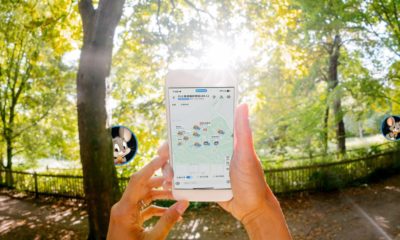

This viral game in China reinvents hide-and-seek for the digital age
-


The Download: digital hide-and-seek, and AI for African languages
-
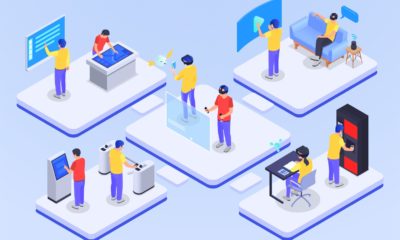

AI-powered 6G networks will reshape digital interactions
-


A Successful Digital Transformation Starts (and Ends) With People
-
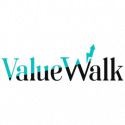

10 EdTech Tools That’s Enhancing The Digital Classroom
-


How new tech is helping people circumvent digital authoritarianism
Tech
The hunter-gatherer groups at the heart of a microbiome gold rush
Published
5 months agoon
12/19/2023By
Drew Simpson
The first step to finding out is to catalogue what microbes we might have lost. To get as close to ancient microbiomes as possible, microbiologists have begun studying multiple Indigenous groups. Two have received the most attention: the Yanomami of the Amazon rainforest and the Hadza, in northern Tanzania.
Researchers have made some startling discoveries already. A study by Sonnenburg and his colleagues, published in July, found that the gut microbiomes of the Hadza appear to include bugs that aren’t seen elsewhere—around 20% of the microbe genomes identified had not been recorded in a global catalogue of over 200,000 such genomes. The researchers found 8.4 million protein families in the guts of the 167 Hadza people they studied. Over half of them had not previously been identified in the human gut.
Plenty of other studies published in the last decade or so have helped build a picture of how the diets and lifestyles of hunter-gatherer societies influence the microbiome, and scientists have speculated on what this means for those living in more industrialized societies. But these revelations have come at a price.
A changing way of life
The Hadza people hunt wild animals and forage for fruit and honey. “We still live the ancient way of life, with arrows and old knives,” says Mangola, who works with the Olanakwe Community Fund to support education and economic projects for the Hadza. Hunters seek out food in the bush, which might include baboons, vervet monkeys, guinea fowl, kudu, porcupines, or dik-dik. Gatherers collect fruits, vegetables, and honey.
Mangola, who has met with multiple scientists over the years and participated in many research projects, has witnessed firsthand the impact of such research on his community. Much of it has been positive. But not all researchers act thoughtfully and ethically, he says, and some have exploited or harmed the community.
One enduring problem, says Mangola, is that scientists have tended to come and study the Hadza without properly explaining their research or their results. They arrive from Europe or the US, accompanied by guides, and collect feces, blood, hair, and other biological samples. Often, the people giving up these samples don’t know what they will be used for, says Mangola. Scientists get their results and publish them without returning to share them. “You tell the world [what you’ve discovered]—why can’t you come back to Tanzania to tell the Hadza?” asks Mangola. “It would bring meaning and excitement to the community,” he says.
Some scientists have talked about the Hadza as if they were living fossils, says Alyssa Crittenden, a nutritional anthropologist and biologist at the University of Nevada in Las Vegas, who has been studying and working with the Hadza for the last two decades.
The Hadza have been described as being “locked in time,” she adds, but characterizations like that don’t reflect reality. She has made many trips to Tanzania and seen for herself how life has changed. Tourists flock to the region. Roads have been built. Charities have helped the Hadza secure land rights. Mangola went abroad for his education: he has a law degree and a master’s from the Indigenous Peoples Law and Policy program at the University of Arizona.
Tech
The Download: a microbiome gold rush, and Eric Schmidt’s election misinformation plan
Published
5 months agoon
12/18/2023By
Drew Simpson
Over the last couple of decades, scientists have come to realize just how important the microbes that crawl all over us are to our health. But some believe our microbiomes are in crisis—casualties of an increasingly sanitized way of life. Disturbances in the collections of microbes we host have been associated with a whole host of diseases, ranging from arthritis to Alzheimer’s.
Some might not be completely gone, though. Scientists believe many might still be hiding inside the intestines of people who don’t live in the polluted, processed environment that most of the rest of us share. They’ve been studying the feces of people like the Yanomami, an Indigenous group in the Amazon, who appear to still have some of the microbes that other people have lost.
But there is a major catch: we don’t know whether those in hunter-gatherer societies really do have “healthier” microbiomes—and if they do, whether the benefits could be shared with others. At the same time, members of the communities being studied are concerned about the risk of what’s called biopiracy—taking natural resources from poorer countries for the benefit of wealthier ones. Read the full story.
—Jessica Hamzelou
Eric Schmidt has a 6-point plan for fighting election misinformation
—by Eric Schmidt, formerly the CEO of Google, and current cofounder of philanthropic initiative Schmidt Futures
The coming year will be one of seismic political shifts. Over 4 billion people will head to the polls in countries including the United States, Taiwan, India, and Indonesia, making 2024 the biggest election year in history.
Tech
Navigating a shifting customer-engagement landscape with generative AI
Published
5 months agoon
12/18/2023By
Drew Simpson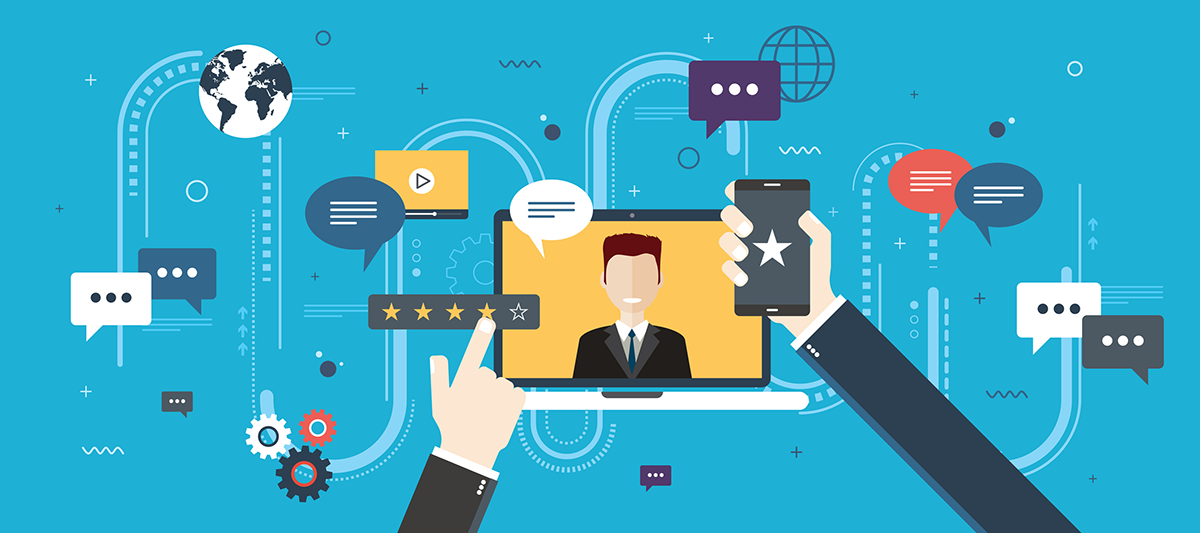
A strategic imperative
Generative AI’s ability to harness customer data in a highly sophisticated manner means enterprises are accelerating plans to invest in and leverage the technology’s capabilities. In a study titled “The Future of Enterprise Data & AI,” Corinium Intelligence and WNS Triange surveyed 100 global C-suite leaders and decision-makers specializing in AI, analytics, and data. Seventy-six percent of the respondents said that their organizations are already using or planning to use generative AI.
According to McKinsey, while generative AI will affect most business functions, “four of them will likely account for 75% of the total annual value it can deliver.” Among these are marketing and sales and customer operations. Yet, despite the technology’s benefits, many leaders are unsure about the right approach to take and mindful of the risks associated with large investments.
Mapping out a generative AI pathway
One of the first challenges organizations need to overcome is senior leadership alignment. “You need the necessary strategy; you need the ability to have the necessary buy-in of people,” says Ayer. “You need to make sure that you’ve got the right use case and business case for each one of them.” In other words, a clearly defined roadmap and precise business objectives are as crucial as understanding whether a process is amenable to the use of generative AI.
The implementation of a generative AI strategy can take time. According to Ayer, business leaders should maintain a realistic perspective on the duration required for formulating a strategy, conduct necessary training across various teams and functions, and identify the areas of value addition. And for any generative AI deployment to work seamlessly, the right data ecosystems must be in place.
Ayer cites WNS Triange’s collaboration with an insurer to create a claims process by leveraging generative AI. Thanks to the new technology, the insurer can immediately assess the severity of a vehicle’s damage from an accident and make a claims recommendation based on the unstructured data provided by the client. “Because this can be immediately assessed by a surveyor and they can reach a recommendation quickly, this instantly improves the insurer’s ability to satisfy their policyholders and reduce the claims processing time,” Ayer explains.
All that, however, would not be possible without data on past claims history, repair costs, transaction data, and other necessary data sets to extract clear value from generative AI analysis. “Be very clear about data sufficiency. Don’t jump into a program where eventually you realize you don’t have the necessary data,” Ayer says.
The benefits of third-party experience
Enterprises are increasingly aware that they must embrace generative AI, but knowing where to begin is another thing. “You start off wanting to make sure you don’t repeat mistakes other people have made,” says Ayer. An external provider can help organizations avoid those mistakes and leverage best practices and frameworks for testing and defining explainability and benchmarks for return on investment (ROI).
Using pre-built solutions by external partners can expedite time to market and increase a generative AI program’s value. These solutions can harness pre-built industry-specific generative AI platforms to accelerate deployment. “Generative AI programs can be extremely complicated,” Ayer points out. “There are a lot of infrastructure requirements, touch points with customers, and internal regulations. Organizations will also have to consider using pre-built solutions to accelerate speed to value. Third-party service providers bring the expertise of having an integrated approach to all these elements.”
